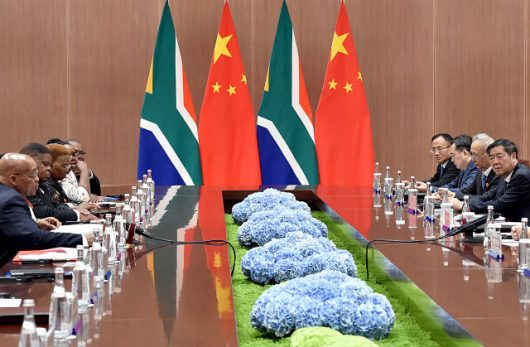BRICS Summit 2017: Another Step to Poverty Alleviation

The BRICS nations—Brazil, Russia, India, China and South Africa—account for a massive 30 percent of world’s GDP and a high proportion of international growth. These nations are key players on the world stage. The annual BRICS summit has helped galvanize a wide array of infrastructure projects, trade and poverty alleviation initiatives to ensure equitable and sustainable growth. BRICS is bolstering the capacities and capabilities of rising markets by tapping into their potentials.
The New Development Bank (NDB) and Contingent Reserve Arrangement is contributing much to improving social security nets, bettering infrastructure networks and regulating governance. Each country is dedicating a fixed proportion to the BRICS Development Bank. The NDB has allocated over $1.4 billion to support four projects each in China, Russia and India. Over the course of 2017, more than $30 billion will be channeled toward supporting projects in other key realms.
Similarly, the BRICS Business Council helps strengthen cooperation among BRICS countries in e-commerce, technical development and agenda-setting.
The BRICS bloc works to integrate a number of global, national and regional development projects and agendas together, like the U.N. Sustainable Development Goals and the African Union 2063 Agenda.
BRICS countries are capitalizing on their positions to encourage trade liberalization within the bloc, especially in regards to increasing efficiency and overcoming red tape and bureaucratic weaknesses often associated with free trade.
The BRICS bloc strengthens positions of countries in Eurasia. In 2017 alone, it was reported that levels of trade between BRICS nations increased exponentially. Shipments to and from countries are reaching record heights. The growth of the manufacturing sector and e-commerce has increased exponentially.
The bloc is also working collaboratively towards safeguarding the future by securing employment in the manufacturing sector and cushioning technology.
The recent 2017 BRICS Summit held in Xiamen, China covered issues ranging from employment, commerce and finance, innovation and technology to reforms of the United Nations Security Council and improving counter-terrorism measures.
As the BRICS bloc often invites many non-BRICs members to observe annual proceedings, it could possibly lead to the inclusion of more developing countries in future. For the recent BRICS summit, China invited countries such Tajikistan, Mexico, Thailand, Kenya and Egypt. The bloc wants to expand its potential and scope in future.
However, even within BRICS nations, there are differences in aspects such as wealth distribution, growth rate and population control. China and India boast exponential growth rates, while countries such as Russia have been experiencing slower growth rates at present.
As a host to this year’s BRICS Summit, China pledged $76.4 million for a BRICS economic and technology cooperation agenda. President Xi Jinping also pledged $4 million to the NDB. China’s Belt and Road Initiative was an important part of the discourse, seeing as it has gained much traction globally since its inception.
South African President, Jacob Zuma, focused on the implementation of the U.N.’s Sustainable Development Goals 2030 to eradicate poverty at the 2017 BRICS Summit.
Zuma spoke about the work of the African Union (AU) in this realm. The AU recently announced the opening of the African Regional Centre. Moreover, Zuma is also confident about the progress of the 23rd Conference of the Parties to the U.N. Framework Convention of Climate Change.
At the BRICS Summit, Prime Minister Narendra Modi was particularly concerned with tackling poverty and corruption, bolstering clean energy sectors, and ensuring gender parity. India recently joined the Shanghai Cooperation to ensure more social stability and economic security.
Prime Minister Modi unveiled 10 “noble commitments” concerning key aspects like counter-terrorism, cybersecurity and disaster management. The BRICS commitment could also bring India closer toward normalizing relations with China, especially after the Doklam border conflict.
Russia and India agreed to collaboratively work toward easing the War in Afghanistan. The leaders also focused on fortifying energy efficiency, tourism and improving youth exchanges, bilateral trade, and boosting investment in an integrated manner.
Furthermore, Brazilian President Michel Termer aimed to secure more foreign investment during the course of the BRICS summit this year to possibly counter Brazil’s current period of languid growth. Termer expressed his wish to channel investment toward infrastructure projects and diversifying markets.
Overall, future BRICS Summits will pave the way for pioneering global development initiatives and will be an important framework for governance and policymaking in the future, as it is essential that developing superpowers be immune to economic headwinds. It will also be the foundation for future agendas in the evolving world dynamic.
– Shivani Ekkanath
Photo: Flickr
